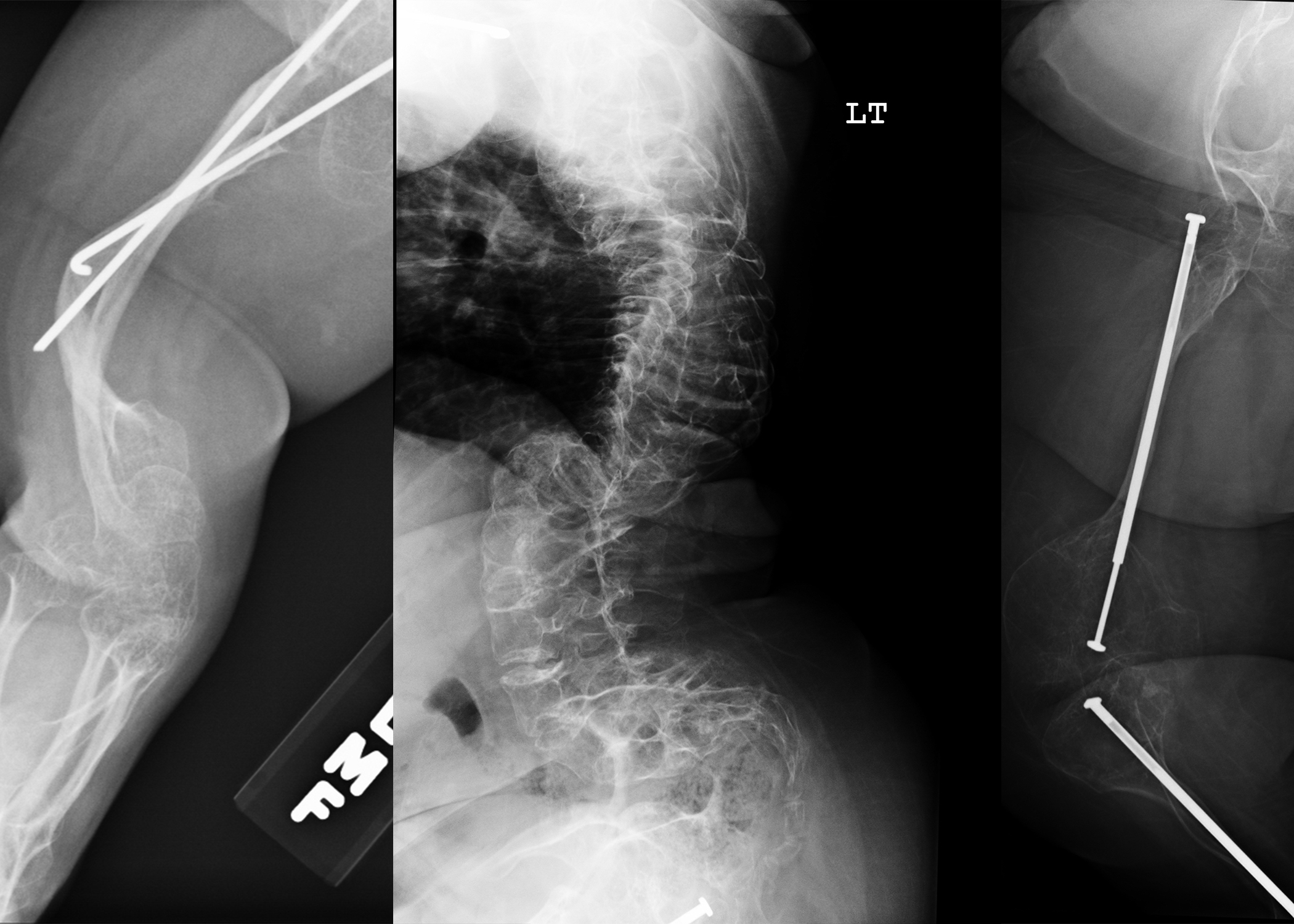Osteogenesis Imperfecta (OI)—often called Brittle Bone Disease—affects roughly one in 15,000 people. This genetic disorder causes bones to fracture easily and develop abnormally due to a collagen deficiency. It affects everything from bone strength to hair and nail growth. Beyond frequent fractures, many with OI also manage disability-related complications such as weak ligaments, hearing loss, and respiratory challenges. Because of these distinct features—blue-tinted sclera, barrel-shaped chest, triangular face—it’s sometimes easy to spot someone with OI in a crowd.
How Osteogenesis Imperfecta is Diagnosed and Classified
OI can either be passed down through parental DNA or appear due to a random genetic mutation. Multiple types of OI range in severity, from mild forms (Type I) where a person might not realize they have it until an unexpected fracture, to critical ones (Type II) where life expectancy can be severely limited. People with Type III, like me, generally face ongoing fractures throughout life, requiring frequent adaptations and considerations for everyday tasks.
An Endless Fracture Count
I stopped counting broken bones at 500 when I was around ten years old. Coughing, sneezing, or even the wrong movement could cause a fracture. After puberty, hormone shifts reduced my fracture rate, but I still break a bone about every month or two. I also grapple with constant back pain stemming from scoliosis. I’m about 2’7″ tall, rely on an electric wheelchair for mobility, and usually need a personal aide for daily tasks like eating or using the restroom. Despite these barriers, as a disabled individual, I’ve learned to persevere and live a life full of possibility.
Surgery, Treatments, and Beyond
While there’s no cure for Brittle Bone Disease, one common surgical approach is “rodding.” Inserting metal rods into long bones or the spine helps straighten them and provide extra strength. I have rods in one arm and both legs, which drastically reduces the severity of my fractures. Other FDA-approved treatments involve bone-strengthening infusions, but their side effects can be tough. My parents—both veterinarians—chose to pursue more homeopathic methods for pain and fracture management.
Why I Don’t Always Go to the Hospital
You’d think I’d be a fixture in the ER, but I can count the times I’ve gone for a broken bone on one hand. My family can usually manage my fractures at home, thanks to my parents’ medical backgrounds. X-rays are often unnecessary; after hundreds of breaks, I can usually identify what’s broken by the snap and localized pain. Excessive hospital visits and radiation exposure simply don’t make sense when we already know what’s wrong.
Coping with Chronic Pain from Osteogenesis Imperfecta
Am I in pain all the time? Technically, yes—but it’s relative. I deal with constant back and muscle aches, plus weak ligaments that lead to less stable joints. Over time, I’ve developed a heightened pain tolerance and rely on strategies like deep breathing, natural remedies, and occasional over-the-counter medications like ibuprofen. Many people with OI choose narcotics, which I personally avoid because of their side effects and the mental fog they can cause.
Embracing Life Despite Disability
Despite the ongoing obstacles of Osteogenesis Imperfecta, I’ve discovered that living with disability doesn’t exclude me from an active, meaningful life. Whether it’s crafting art, advocating for disability awareness, or simply enjoying daily routines, I’m proof that you can adapt and thrive with Brittle Bone Disease.
Questions or curiosities? Feel free to share them below, and I’ll do my best to shed light on what living with Osteogenesis Imperfecta can look like day to day.

